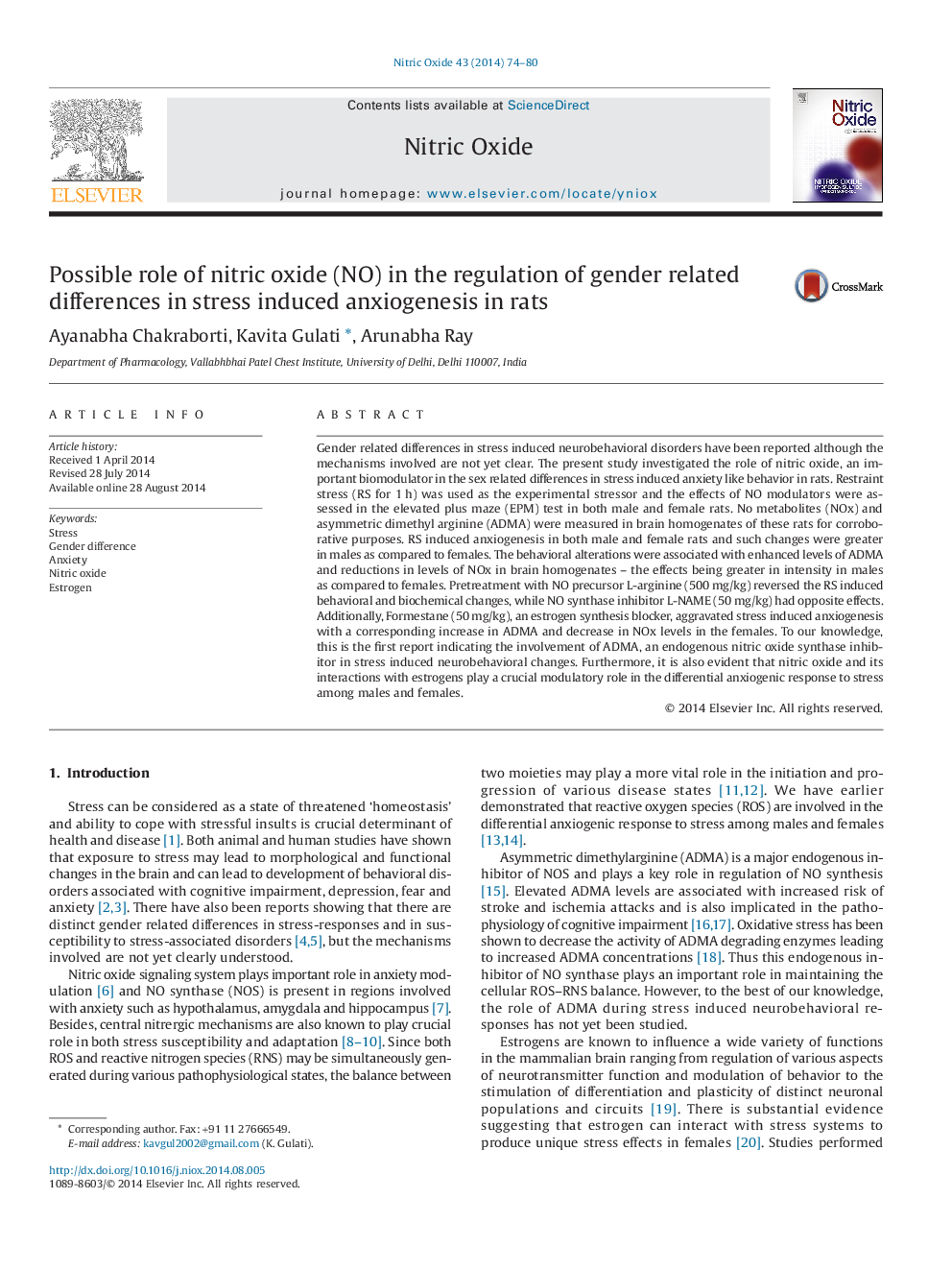| Article ID | Journal | Published Year | Pages | File Type |
|---|---|---|---|---|
| 2000509 | Nitric Oxide | 2014 | 7 Pages |
•Restraint stress induced greater anxiety in males than females.•Brain NO was suppressed and ADMA enhanced more in males.•L-arginine attenuated and L-NAME aggravated such anxiogenesis.•Formestane aggravated stress induced behavioral and biochemical changes in females.•Gender differences in such anxiety involve estrogen–NO interactions.
Gender related differences in stress induced neurobehavioral disorders have been reported although the mechanisms involved are not yet clear. The present study investigated the role of nitric oxide, an important biomodulator in the sex related differences in stress induced anxiety like behavior in rats. Restraint stress (RS for 1 h) was used as the experimental stressor and the effects of NO modulators were assessed in the elevated plus maze (EPM) test in both male and female rats. No metabolites (NOx) and asymmetric dimethyl arginine (ADMA) were measured in brain homogenates of these rats for corroborative purposes. RS induced anxiogenesis in both male and female rats and such changes were greater in males as compared to females. The behavioral alterations were associated with enhanced levels of ADMA and reductions in levels of NOx in brain homogenates – the effects being greater in intensity in males as compared to females. Pretreatment with NO precursor L-arginine (500 mg/kg) reversed the RS induced behavioral and biochemical changes, while NO synthase inhibitor L-NAME (50 mg/kg) had opposite effects. Additionally, Formestane (50 mg/kg), an estrogen synthesis blocker, aggravated stress induced anxiogenesis with a corresponding increase in ADMA and decrease in NOx levels in the females. To our knowledge, this is the first report indicating the involvement of ADMA, an endogenous nitric oxide synthase inhibitor in stress induced neurobehavioral changes. Furthermore, it is also evident that nitric oxide and its interactions with estrogens play a crucial modulatory role in the differential anxiogenic response to stress among males and females.
